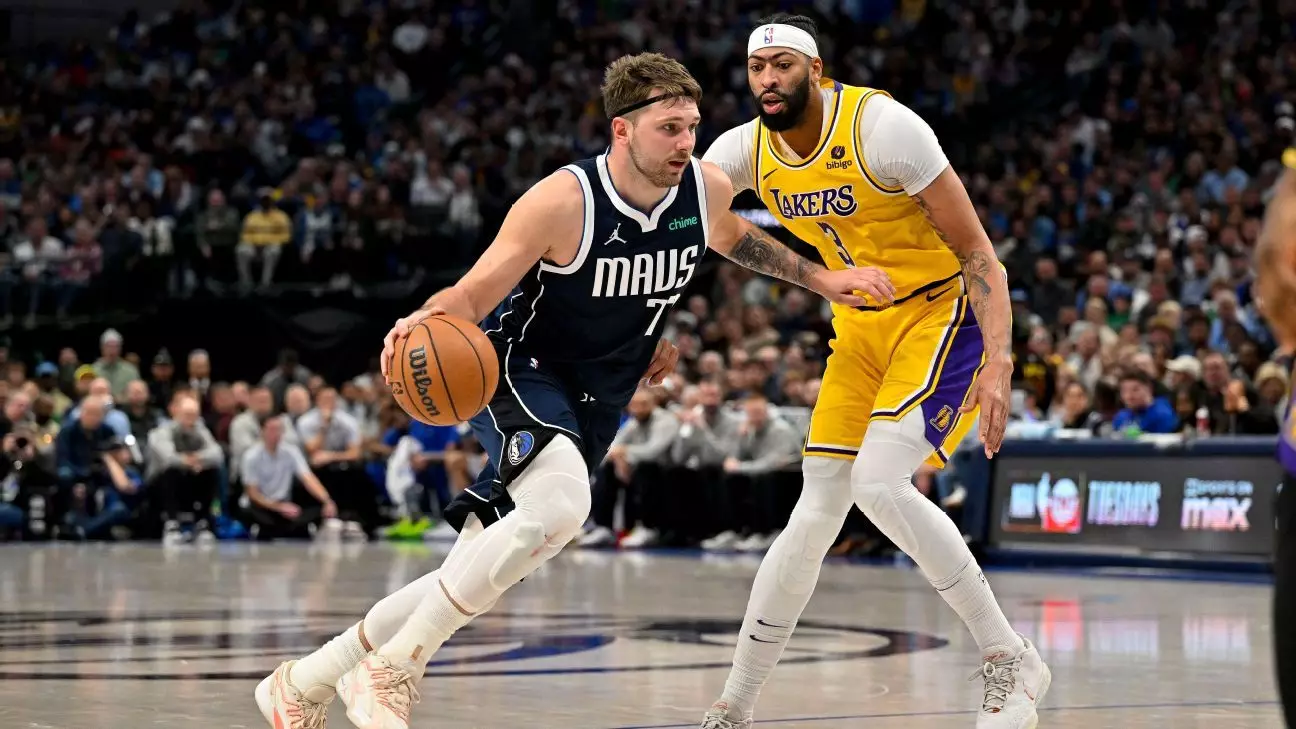In a significant shake-up within the NBA, a historic three-team trade has transpired, swapping two of the league’s premier talents: Anthony Davis and Luka Doncic. This deal, orchestrated by the Los Angeles Lakers, Dallas Mavericks, and Utah Jazz, not only reflects the changing dynamics of the Western Conference but also raises critical questions about team strategies and player fitness.
Los Angeles acquired Doncic, accompanied by teammates Maxi Kleber and Markieff Morris, while Dallas secured Davis along with Max Christie and a coveted 2029 first-round draft pick from the Lakers. Meanwhile, Utah’s involvement sees them acquire players and picks that bolster their rebuilding efforts. Mavericks’ General Manager, Nico Harrison, articulated his strategic reasoning by emphasizing the importance of defense in securing championships. By swapping Doncic for Davis, Harrison believes that the acquisition of an elite defensive presence gives them a better shot at both immediate and long-term success.
This trade was not borne out of a spontaneous decision; sources indicate that the conversations began several days prior to the announcement, revealing the intricate web of relationships and historical ties within the league’s front offices. The established rapport between Harrison and Lakers’ GM Rob Pelinka certainly paved the way for open discussions, showcasing how relationships can heavily influence player transactions in the NBA.
A surprise revelation for Lakers’ superstar LeBron James came when he learned of the trade while dining with family, post a win over the New York Knicks. His surprise indicates the rapidity with which such deals can transpire, leaving even top players in the dark. It also highlights the sudden shift in team dynamics that can occur when cornerstone players are exchanged. Moreover, neither Davis nor Doncic were privy to the impending changes, signifying a culture in professional sports where business decisions sometimes trump personal relationships.
The implications of this trade extend beyond mere player exchanges, affecting locker room morale, player chemistry, and even fan sentiment. Teams must navigate these emotionally charged environments while aiming for competitive success. With both stars being unaware of the trade until its public fallout, one must question how players can maintain focus in such turbulent times.
A central issue leading to the trade was Luka Doncic’s ongoing conditioning problems, which have increasingly frustrated the Mavericks’ management. Reports suggest that his failure to maintain a disciplined diet has led to significant weight gains, stymying his performance and exacerbating injury issues. Doncic has struggled with injuries, limiting his appearances and causing disruptions in the Mavericks’ overall strategy. Consequently, this trade allows Dallas to pivot towards a player like Davis who, when healthy, can bring a robust defensive skill set and championship experience to a dysfunctional Dallas roster.
On the other hand, Davis has also faced his share of injury challenges, sidelined recently due to an abdominal strain. Both players represent a double-edged sword for their new teams—high reward potential but with a history of physical setbacks. For fans, the trade represents an exciting opportunity but carries an underlying anxiety related to their new star players’ health and availability for the remainder of the season.
The significance of this trade extends beyond the immediate teams involved. As it stands, this is a landmark deal — the first instance of two reigning All-NBA members swapping places mid-season, according to the Elias Sports Bureau. This sets a precedent for future trades and player movement within the league, possibly ushering in a new era where elite talents are more openly exchanged as franchises chase the ultimate prize.
Moving forward, both the Lakers and Mavericks will continue to compete, with two pivotal games remaining this season. The first encounters will further gauge how each team adapts to their new configurations and the performance of their newly-acquired stars. As the playoffs loom on the horizon, the repercussions of this trade will certainly be felt and scrutinized across the NBA landscape. Ultimately, this unprecedented trade is not merely about trading statistics and performances; it symbolizes a broader shift within the league towards prioritizing various aspects of team assembly — from player conditioning to strategic defensive alignments. As fans and analysts alike watch this season unfold, the effects of this monumental trade will be a significant case study in the evolution of team building in modern basketball.

